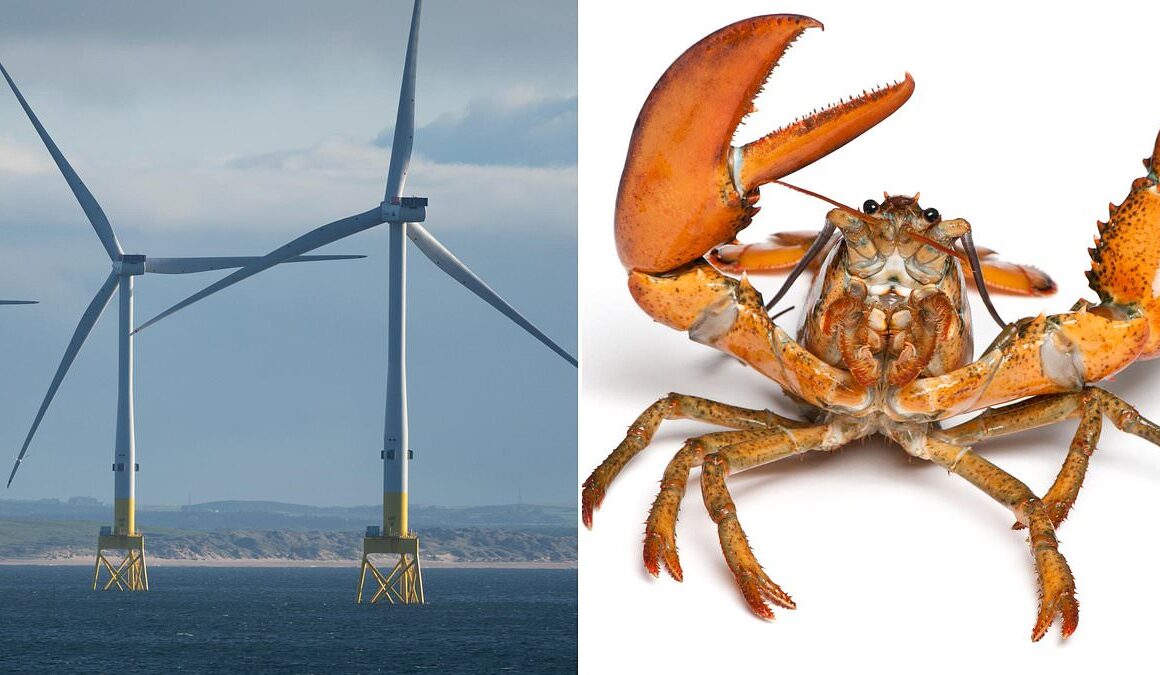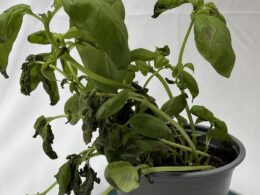They have been hailed as the ecological solution to Scotland’s future energy needs.
But offshore wind farms could end up creating a new and severe threat to the environment.
For building turbines in the sea can allow harmful foreign species either to set up home in Scottish waters or spread more quickly through them – causing untold harm to the marine habitat, the seafood industry and the economy.
Although the Scottish Government has pledged to massively expand offshore wind power, its own experts admit the move risks an influx of exotically named invaders such as the brush-clawed shore crab, Japanese skeleton shrimp, Devil’s tongue weed and leathery sea squirt.
Invasive species are a threat to local wildlife – and can even lead to extinction events – as they often bring new diseases and disrupt the eco-system by out-competing for food.

There has been an explosion in wind farms off the Scottish coast
Among the most harmful imports which could be spread by the construction of more offshore wind farms is the American slipper limpet, a type of sea snail which can rapidly take over the seabed and decimate valuable populations of oysters and mussels.
The threat is being taken so seriously the government has announced it is racing to develop a ‘biosecurity’ strategy to minimise risks to the country’s marine life from new offshore turbines.
Last night warnings were issued that the rush to renewables should not come at the cost of harming the environment.
Scotland’s shellfish industry produces 10,000 tons of blue mussels and 300 tons of rock oysters a year – worth £35 million.
Nick Lake, chief executive of the Association of Scottish Shellfish Growers, said producers were worried about the arrival of the slipper limpet in Scotland, as well as the Asian date mussel, American oyster drill and Japanese oyster drill.
He said: ‘Shellfish farming is as green as it gets.
‘These organisms simply feed on plankton in the sea; we don’t put any chemicals out there.
‘It has a low carbon footprint and low food miles – just look at all the packs of home-produced Scottish mussels and shellfish in your local supermarket.
‘It would be really ironic if trying to generate green energy through wind farms actually had a negative impact on that.’
Campaign group Scotland Against Spin, which opposes the proliferation of inland wind turbines, said more research is needed before offshore power generation is ramped up.
Its chairman Graham Lang said: ‘The impact on marine life of the industrialisation of the seabed is poorly researched and understood.
‘Every care must be taken to ensure the expansion of offshore turbines does not come at a cost to the marine environment.’
The Scottish Government has vowed to scale up the building of offshore wind farms as part of its plan to reach net zero by 2045.


Turbines can give species such as the American lobster (left) and orange sheath tunicate (right) a foothold
Hundreds of turbines are set to be built around the coastline – either floating or attached to the seabed.
However, experts from the government’s Offshore Wind Directorate fear such constructions could lead to the arrival or spread of invasive non-native species.
One of the dangers is that new species are imported into an area in the water used in ballast tanks or attached to the hulls of ships.
Another major concern is that structures built onto the sea floor create new habitats for invaders and allow them to leapfrog more easily from one area to another. The government is now aiming to enhance biosecurity and is seeking expert advice on how to proceed.
Documents for the recruitment contract warn that non-native species are responsible for around 60 per cent of global extinctions.
The papers state: ‘Offshore marine renewable devices can facilitate the spread of invasive non-native species (INNS) by providing new substrates for attachment in areas where it was otherwise impossible.
‘Man-made structures can act as “stepping stones” for INNS, allowing species to spread to areas previously impossible to reach.’
The documents include a list of ‘Marine INNS of Concern in Scotland’ cataloguing 23 types of aquatic plants and creatures such as the American lobster, compass sea squirt, orange sheath tunicate and the trumpet tubeworm.







